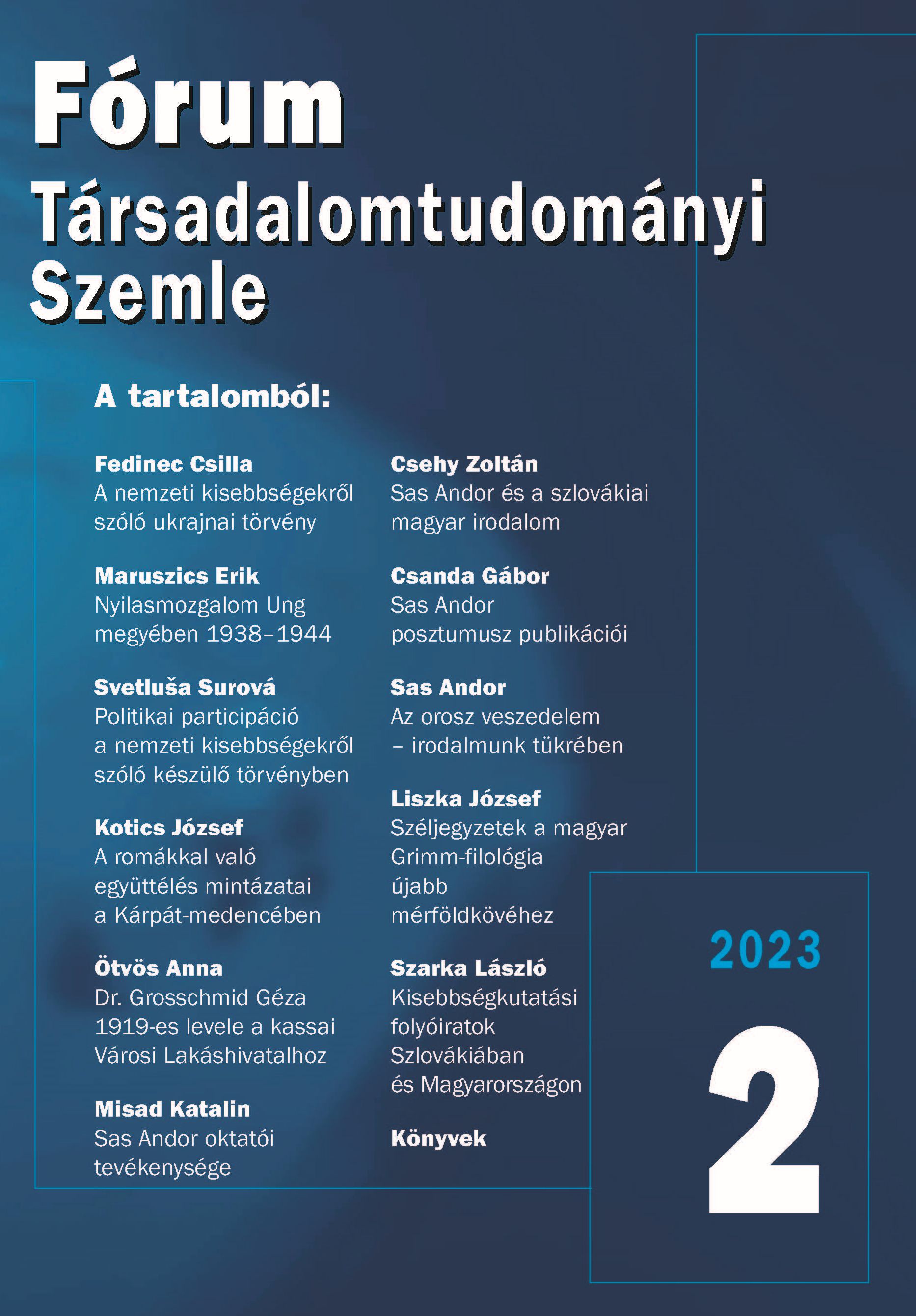Stigmatizáló különbségtétel
Stigmatising Distinction
Patterns of Living With Roma in the Carpathian Basin
Author(s): József KoticsSubject(s): Cultural Anthropology / Ethnology, Sociology of Culture, Ethnic Minorities Studies
Published by: Fórum Kisebbségkutató Intézet
Keywords: ethnic coexistence situations; sociology; cultural anthropology; social history; dichotomous and complementary relations
Summary/Abstract: The research on Roma/Gypsy people in Hungary is extensive, and their common characteristic is that they have very different perspectives due to the wide range of disciplinary approaches. Although both international and domestic investigations are now attempting to define themselves as a separate scientific discipline under the heading of Romani studies/Gypsiology, these efforts are not considered to be very successful, since they represent a very heterogeneous vision. In my study, I take stock of the main features of the different disciplinary approaches. In doing so, I argue that the study of Gypsy–Hungarian coexistence can be achieved by bringing together social-historical, sociological, and anthropological perspectives. In the other major unit of the paper, I present the production of the process of ethnic boundary formation and their characteristic differences through two case studies. In my study of ethnic coexistence situations in the Carpathian Basin, I found that Roma and non-Roma coexistence practices are always based on opposition (dichotomization), regardless of whether they live with Romanians, Saxons, or Hungarians. On the contrary, in living together with non-Roma ethnic groups, a complementary relationship prevails from the very beginning, which maintains differences in a physical and/or symbolic way, but recognises and considers the other ethnic group's independent form of existence as equal to its own.
Journal: Fórum Társadalomtudományi Szemle
- Issue Year: XXV/2023
- Issue No: 2
- Page Range: 65-88
- Page Count: 24
- Language: Hungarian

